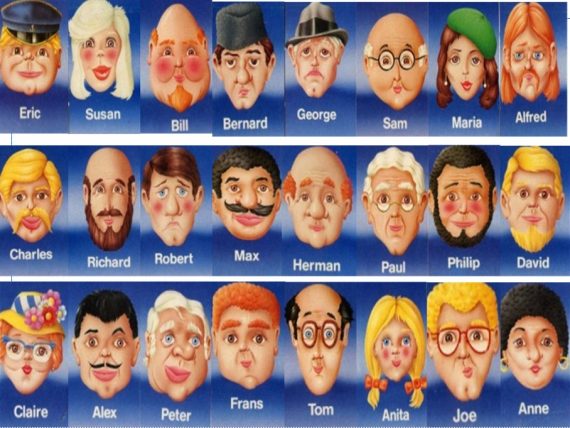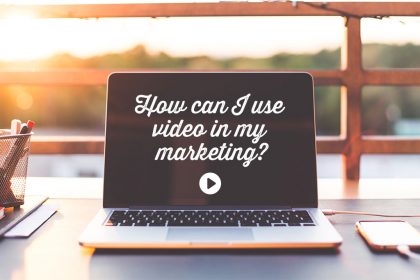Are you playing Guess Who with your marketing? (And why it doesn’t work)
Want to easily create marketing that connects with the right people and sells? Find out why you need to stop playing Guess Who – and find your Susans.
As we recently explained, knowing exactly who your ideal customers are can help your business to make more money.
But too many freelancers and small businesses haven’t yet nailed exactly who they should be working for and selling to, and instead are playing an expensive game of Guess Who? with their marketing strategy.
What is marketing Guess Who? (And why it doesn’t work)
We use the analogy of playing Guess Who because it perfectly illustrates exactly what you’re trying to do when targeting your marketing.
Picture what your target audience looks like. Do you have a clear picture of a specific person, or does it look a bit like this?

When you’re planning a Facebook ad, blog or social media campaign, are you trying to please Eric, Susan, Herman, Richard, Claire and Frans all at once?
And if so, how confident are you that your marketing is absolutely spot on for every single one of these people? That it accurately addresses a problem they all want to solve, and describes the precise results they want?
Or are you frustrated that your marketing never really seems to work? Do you struggle to know what to say? To really have a firm grasp of what your customers want to hear? Or, more importantly, what will actually inspire them to take action?
Why you need to find your Susans
Now imagine instead, that you spent some time researching your ideal customer. That, rather than trying to talk to everyone, you worked out that there was one person who really needed and loved what you did, and was looking to buy from someone just like you.
That, of all these people, you realised that the only person who was actually going to buy from you regularly and recommend you was Susan.

Now, you know exactly who your perfect customer is, you can get to know their specific likes and dislikes, Their problems and their dreams. You can find out where they spend their time, and what kind of messages and offers they’re most likely to respond to.
Suddenly there’s much less guesswork in your marketing. Instead of being overwhelmed by your options – which social media platforms should you focus on… what kind of headline will work best… what specific benefit you offer will most appeal… – you can make confident decisions based on what you know about Susan.
And when you know what Susan looks like, you can go out and find lots more like her – lots of customers who will buy from your regularly. So your target audience now looks like this.

What does this work in practice?
So how does this actually work in practice? Let’s say you run a local health food shop. Without targeting your marketing, you try to appeal to a wide range of potential customers, each of whom has very different motivations for buying from you.
Some of them will buy from you weekly, others may shop from you once a year, but without narrowing them down, you can’t tell which customer is which. Besides, you tell yourself that the more people you try to reach through marketing, the more customers you’ll have.
So instead you create generic marketing around the message: “Want to stay healthy? Check out our wide range of different products” in the hope it will appeal to as many people as possible.
But the problem with this messaging is that it’s vague. Yes it may describe the overarching goal of every type of customer, but it doesn’t really talk to anyone in particular.
How to build powerful marketing for your perfect customer
Now assume you’ve conducted some market research and profiled your ideal customer – someone who regularly buys from and recommends you. You build an avatar around her and call her Susan. This is what you know about Susan:
Susan is a local woman between 35 and 55. She has a family, and likes to keep as health as possible. She buys free range eggs and organic fruit, and cooks family meals from scratch.
She likes to think of herself as reasonably well read on health, and is keen to discover any recent research on vitamins and health products – and try them out.
Susan visits the high street your shop is on once a week on average, and will always come in to see what latest products or offers you have, or stock up on her regular purchases. Susan spends around £35 a month in your shop.
Susan reads weekend broadsheet newspapers for the recipes and gardening articles, and uses Facebook to keep in touch with old friends and family. Other local shops she regularly visits are the garden centre and Waitrose.
You’ve also identified some key insights into Susan’s motivations for staying healthy, and barriers and incentives to purchase. You also know that there are hundreds of Susans in your local town.
Using this information, it’s easy to create a marketing plan that will help you find more Susans and come up with ideas to help her to notice you and encourage her to visit and buy from you.
Here are just a few ideas:
- Run a Facebook ads campaign targeted on your area, Susan’s age group and interests, with an offer on the latest female health supplements.
- Team up with the local garden centre to promote each other’s businesses, with fliers at the counter, and even small pop ups in each others’ stores.
- Start writing short weekly blogs on your website highlighting the latest health news and any related products in stock.
- Promote these blogs on your Facebook page with offers. Boost the Facebook posts that get the most engagement.
- Start a loyalty card scheme that rewards purchases over a certain value.
- Source and share healthy recipes someone like Susan would like to try out on your website, Facebook page and local free magazines. Run an offer that week on a key ingredient from the recipe you stock.
Now imagine trying to come up with such specific and (potentially) powerful marketing ideas without knowing who Susan is, and what she likes and does?
Imagine trying to come up with ideas that appealed equally to Anita, Annie, Peter and Alex too? Your marketing would be far less targeted and specific – and less powerful.
You can see in this example, the power of knowing exactly who you’re talking to in your marketing. It makes it not just easier, but possible to find them and connect with them using messages and offers that appeal.
How to find YOUR Susans
If you’d like help to find your Susans, watch our Ideal Customer Masterclass. In it you’ll learn:
- The common mistake too many businesses make when finding their ideal customers
- What you can learn from the healthy juice story about motivations to buy and purchase patterns
- Why niching makes finding your ideal customer easier (and how it earned one mum £17 million)
- How to research your existing customers to learn who your ideal ones are (and what to do if you don’t have any customers yet)
- Where to find golden insights into what your ideal clients think and how they feel
- An easy way to turn your research into powerful avatars using our template
- How many avatars you need (and why you need to create a negative one)
- How to bring your avatars to life to really get to know your perfect customers
- Where to find more of your ideal customers once you’ve identified who they are
- How to put it all together as a working process
To make it easy for you to build a rounded profile of your perfect customer, we’ll send you a copy of our avatar template. This guides you by asking you specific questions about your customer and their motivations.
So, if you want to stop playing Guess Who, and start confidently coming up with powerful, creative marketing ideas that connect with your perfect customers, watch our Ideal Customer Masterclass.










